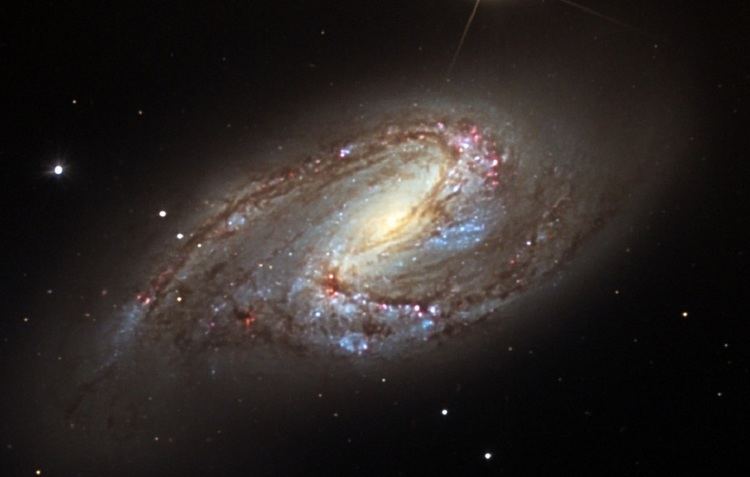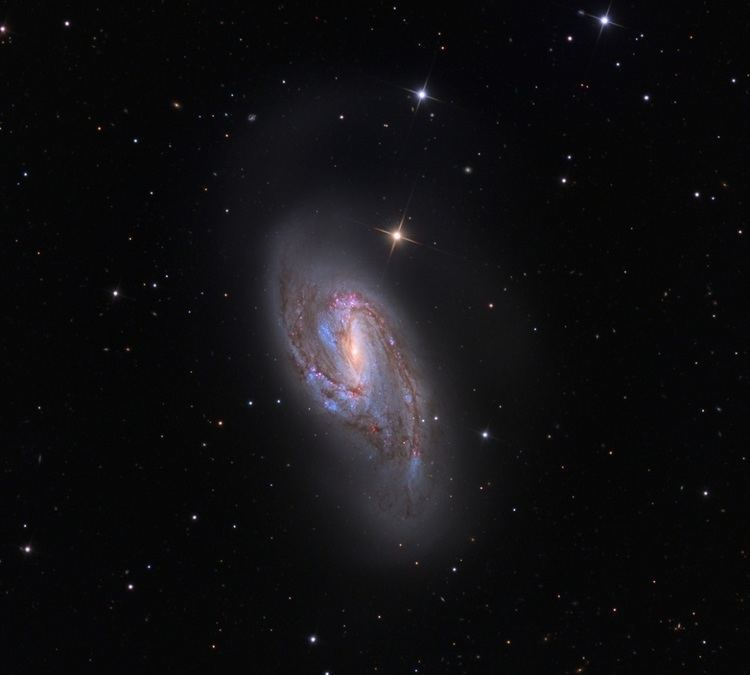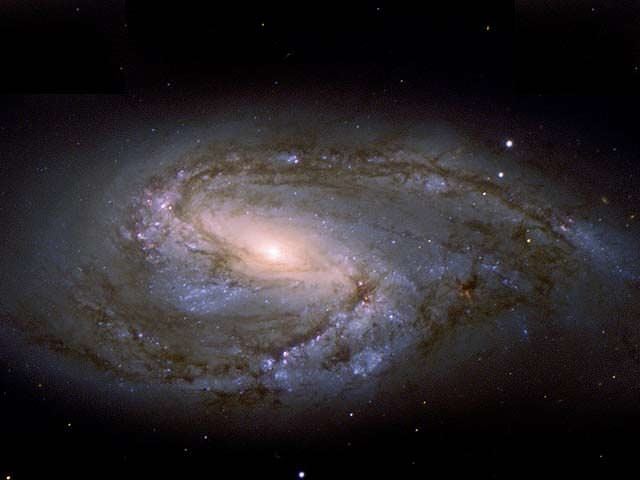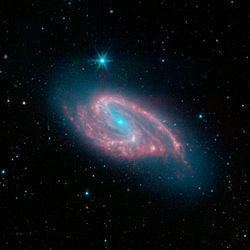Right ascension 11 20 15.0 Type SAB(s)b Magnitude 8.9 Apparent magnitude (V) 8.9 | Declination +12° 59′ 30″ Apparent size (V) 9.1′ × 4.2′ | |
 | ||
Redshift 0.002425 (727 ± 3 km/s) Distance 36 ± 5.0 Mly (11.0 ± 1.5 Mpc) Similar Messier 65, Sunflower Galaxy, Messier 67, Messier 61, Black Eye Galaxy | ||
Zooming in on messier 66 galaxy
Messier 66 (also known as NGC 3627) is an intermediate spiral galaxy about 36 million light-years away in the constellation Leo. It was discovered by Charles Messier in 1780. M66 is about 95 thousand light-years across with striking dust lanes and bright star clusters along sweeping spiral arms. M66 is part of the Leo Triplet, a small group of galaxies that also includes M65 and NGC 3628. As of 2015, four supernovae have been observed in M66.
Contents

Hubble snaps messier 66
Characteristics

Gravitational interaction from its past encounter with neighboring NGC 3628 has resulted in an extremely high central mass concentration; a high molecular to atomic mass ratio; and a resolved non-rotating clump of H I material apparently removed from one of the spiral arms. The latter feature shows up visually as an extremely prominent and unusual spiral arm and dust lane structures as originally noted in the Atlas of Peculiar Galaxies.

